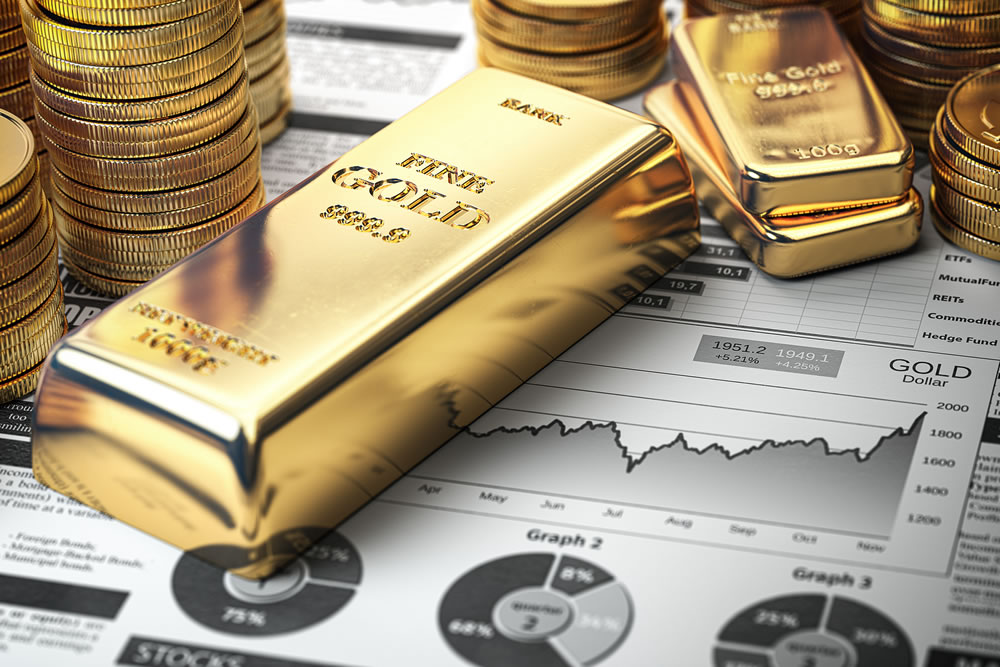Whatever the state of the gold market is at any given time, one thing is for certain; it comes with high liquidity and some great opportunities to profit thanks to its unique position within the world’s unique economical and political systems. Investing in gold can take on many forms, ranging from owning the metal outright to speculating through equity and options markets – the latter of which can offer some excellent leverage with measured risk.
Thanks to recent developments within the gold market, there are some interesting opportunities now arising for investors – but according to industry experts, those looking to profit through this precious metal will need to move fast. Of course, there is some level of knowledge and skill required if you’re eager to see success in trading gold, and understanding what moves it and how to take advantage of it is key.
Here, we take a dive into the basics of the factors affecting the gold market today, and the different techniques investors favour for making the most of it.
What moves gold?
Gold is one of the oldest currencies on the planet, and is deeply embedded into the financial world as a result. Although many modern investors have turned their attention to cryptocurrencies in recent years, those more experienced in the handling of gold assets understand that this yellow metal can, in many ways, make for a safer bet.
Unlike crypto, gold reacts to only a small number of different price catalysts; inflation and deflation, greed and fear, and supply and demand. However, trading in reaction to any of these polarities can prove risky, because when one may appear to be controlling price, it is actually another that is responsible for the latest fluctuations.

The inflation effect
Surging inflation has recently added some shine to gold investors who are eager to hedge against rising prices, but this may prove to be short-lived, as inflation concerns are expected to level off next year. In 2021, inflation is at its highest level in decades – but the supply shocks and resulting bottlenecks that saw prices soar are inevitably set to fade later on in the new year as normality gradually returns.
Until this year, gold prices had been rising sharply in line with low inflation levels, which had remained on a relatively even keel since the early 1980s, so the latest development has proved to be an interesting opportunity for investors – at least for now.
The key gold trading techniques
CFD trading
CFD trading is common in the gold industry, and from a practical level, offers many benefits when compared with trading the physical metal itself. While gold has to be stored and transported, as well as kept secure, CFD trading allows investors to bypass these considerations and simply speculate on the price instead.
The lower transactional costs and beneficial structure of CFDs also make life easier for traders, allowing them to take much larger positions than they could otherwise afford and stand to reap much greater profits as a result from small ticks in market price. For advanced gold traders using leverage, there is no better way to trade.
Gold futures
A gold futures contract is, essentially, an agreement to buy or sell gold at a specific price on a future date. These generally see traders settle for cash or sell the contract before expiry, but can also be used to take possession of the physical commodity, on occasion. The standard gold futures represent 100 troy ounces of gold.

Gold mining stocks
Highly correlated to gold price and subject to higher volatility than physical gold trading, gold mining stocks present another great opportunity and allow investors to invest in shares of gold mining companies. The growth and return of course depends on the expected future earnings of a given company, and effective management, reserves and production costs should all be taken into account when considering this – as well as hedging activities and mine exploration project development.
Gold ETFs
ETFs are exchange-traded funds, closed-end funds and exchange-traded notes that are used to own gold as an investment. These can either track the movement of the underlying commodity itself, or a basket of publicly traded stocks.
Those looking to diversify their investments within gold tend to favour this option, with SGOL, IAU and GLD proving to be some of the most popular ETFs.
The bottom line
The inflation effect is real, and as we head towards the end of this year, and through into early 2022, we can expect to see even stronger demands for gold stoked, with the price forecast for the first quarter recently raised by UBS analysts from $1,700/oz to $1,800/oz. So, if you’ve been considering dipping your toe into the world of gold investment, then there’s no time like the present to take the plunge.
Disclaimer: Investing money carries risk, do so at your own risk and we advise people to never invest more money than they can afford to lose and to seek professional advice before doing so.






















